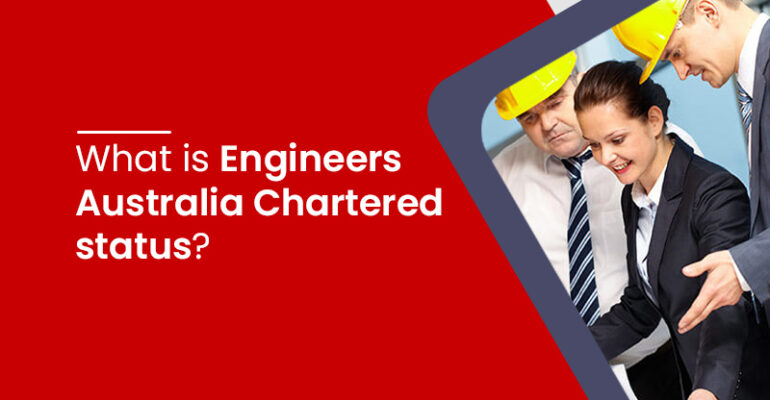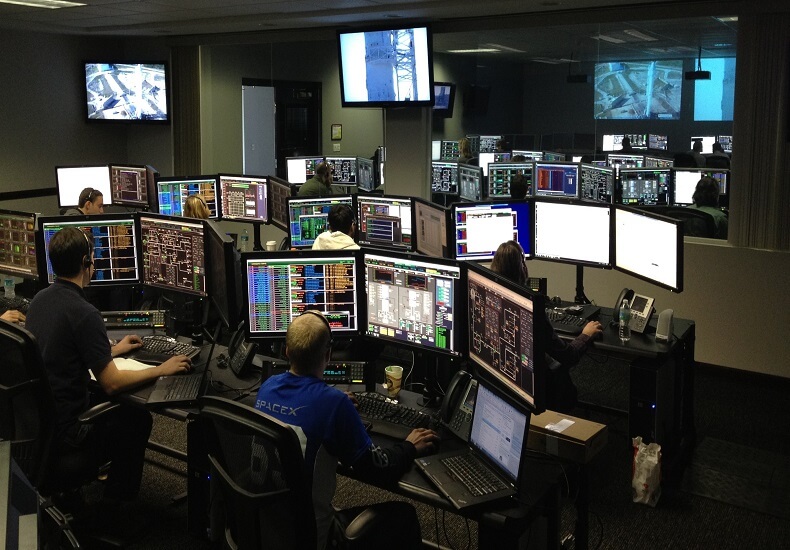What is Engineers Australia Chartered status?

What is Engineers Australia Chartered status?
How to maintain and obtain Chartered status of Engineering?
Many engineers want to migrate to Australia and apply for engineering registration annually. Engineers Australia (EA) is the designated body in Australia for evaluating engineering skills and abilities and registering engineers as certified professionals. Engineers can contribute to a nation’s development in different sectors like agriculture, construction, transportation, education, health, communication, and overall development.
The next major aim of an engineering career is to get chartered status. Professional engineers, engineering technologists, engineering associates, and engineering managers who achieve chartered status reflect the highest professional standards and dedication to meeting the ever-increasing demands and needs of engineering in today’s environment.
Read More: Do you know how to write a relationship statement for your partner visa? Here’s how. ✨✨
Chartered status is a certificate that provides you with worldwide recognition and, more significantly, confirmation that you are qualified to practice and lead within an engineering team.
To become a chartered engineer, you must be eligible for membership in Engineers Australia.
Eligibility requirements:
- Engineers Australia membership or eligibility to join as an EA member
- Professional development period corresponding to three years of engineering experience
Four ways to become a chartered engineer
1. Engineering practice report and professional interview
- Submit one report for assessment
- Attend professional interview
2. Professional assessment and career development program
- Submit ongoing career episode reports and get evaluated for each
- Attend professional conferences
3. Mature experienced engineer’s pathways
- Submit a certification of accomplishment and a record of continuing professional development (CPD).
- Attend a professional assessment. 15+ years of experience, including five positions of responsibility, is required.
- Engineers Australia membership is required.
4. Mutual recognition agreement
- Recognized international qualification is checked and verified
Learn More: Find out how ANZSCO skill levels are classified. 💪💪
Maintaining chartered status
- 150 hours of continuous professional development (CPD) are required every three years.
- Every five years, an audit is performed.
Chartership is given to those professional engineers who are recognized as talented, creative, and innovative for the development of a nation. Being a Chartered Professional Engineer (CPEng) implies responsibility, experience, abilities, and talent in engineering.
Engineers Australia, one of the most expert networks of engineers in Australia, allows its members to gain the title of “Chartered Engineer” by opening countless doors of opportunity through this internationally recognized process. This article explains how to obtain Engineers Australia Chartered Status as a professional engineer.
Engineers Australia requires that you select a relevant chartered competency assessment pathway from four alternatives to be recognized as a chartered engineer in Australia. The four EA Chartered Competency Assessment routes are listed below:
- Engineering competency claims (ECCs)
- Engineering Experience Record (EER)
- Continuing Professional Development (CPD) Record
- An up-to-date CV
Membership grade Engineers Australia

It provides different membership grades: affiliate, student, graduate, member, fellow, honorary fellow, and chartered. Those evaluating Fellow, Member, or Honorary Fellow status can apply for Chartered Engineer status.
Chartered pathway
The members of Engineers Australia have been divided into six-step processes to gain chartered status.
- Self-Assessment
- Industry Review
- Enroll for Chartered
- Chartered Evidence
- Professional Interview
- Chartered Status
Self-assessment
In the assessment step, the candidates need to decide if their present information and mastery of the business are as per the Chartered Skills given by Engineers Australia.
The candidates need to give themselves a rating of these 4 – ‘Creating, Functional, Proficient, or Advanced’ in the components characterized by Engineers Australia Stage 2 Competencies.
Engineers Australia gives 16 components in the Australian Stage 2 competency measures for each engineering occupation: professional engineers, engineering associates, and engineering technologists.
The elements of a Chartered Professional Engineer (CPEng) are classified as follows:
- Personal Commitment – Showing how the candidate manages moral issues, displays their work obligations, and builds their capabilities.
- An obligation to Community –It shows how well the candidate shows their ability inside their working area, with their customers, higher specialists, or subordinates, and how well they tackle the issues and relieve damage and risk.
- A value in the Workplace – This value demonstrates the capability and abilities of the candidates as head, planner, and initiator of Engineering activities. How well they can cooperate with people in their working place.
- Technical Proficiency – This shows how effectively the candidate uses the design innovation and makes their creation to attract the customer.
Learn More: How to become a registered engineer in Australia? 🤔🤔
The Engineers Australia CPEng applicant has to show four kinds of rating they are as follow:
- Developing– This implies the candidate is learning, and sometimes they need guidance while working.
- Functional – Functional means that the applicant can work themselves without any supervision by the instructor.
- Proficient– The candidates can work without any guidance independently and have the ability to supervise and provide training to other Engineers.
- Advanced– This implies the candidate is ahead and can supervise all the engineering work, make decisions, know the related work, and give others instructions.
Based on the above evaluations, the candidates are given directions about applying for the Chartered engineer’s title, proceeding with proficient improvement by Engineers Australia. The candidate can experience a self-assessment process. How often do they need it?
The industry review
This implies that After finishing the self-assessment step and getting a rating, the candidates need to get input on their Engineers Australia Chartered competencies from their companions in this progression. The candidates can only move to the third step once they hold a ‘Functional’ Rating.
Who can be considered an Industry Reviewer?
- Those already Chartered members of Engineers Australia or an Engineering Team member are industry reviewers.
- The person has more than seven years of experience in the engineering field.
Enroll for chartered
Applicants can enroll in the chartered application once they have received a functional or above rating. Applicants pay the Chartered Engineer Australia fee and submit their CV and CPD (Continuing Professional Development) log at this stage.
By this point, the applicant should have finished their industry review and submitted it. The candidate must also state which areas of knowledge they wish to pursue chartered status in.
Area of practice:
The Chartered Engineer’s Area of Practice might be thought of as their “purpose.” It simply displays the applicant’s preferred occupation. The candidate can become a Chartered Engineer in more than one engineering field.
Chartered evidence
Chartered Evidence is a collection of documents, presentations, drawings, emails, reports, and other materials demonstrating an applicant’s engineering ability to get CPEng Australia certification. You must present relevant documentation for each of the 16 skills you assessed throughout the self-evaluation process. Engineers Australia has compiled a thorough list of which types of evidence are suitable for various types of competency. As a result, the applicants will be required to provide one.
Professional interview
The candidate will be requested to come in for a professional interview once the assessors have reviewed the chartered evidence and found it satisfactory. A professional interview session can be scheduled within four weeks after the review’s conclusion. The interview lasts approximately an hour, and the candidate may be asked to deliver a presentation and explain the chartered evidence they submitted with their application. One Engineers Australia assessor and a panel of engineers from outside the industry would make up the interview panel.
Chartered status
Following the interview, the candidate will receive an email with the findings, including the candidate’s Chartered Award and Areas of Practice. Engineers Australia will also provide a certificate certifying the candidate’s chartered status after a certain time. Engineers Australia will provide the necessary help and advice on achieving chartered status if the candidate does not receive it. They will also submit more papers, give further information or proof, and return for a personal interview.
CDRWritersAustralia for your assessment
We offer licensed writers who, based on their years of experience in assessment intake, will assist you in producing your report on demand. The EA criteria are well-known, and we strictly adhere to each rule to guarantee that your evaluation is completed properly. On request, we can write CDR reports, RPL reports, KA02 reports, Stage 2 competency reports, and various other high-quality reports.

